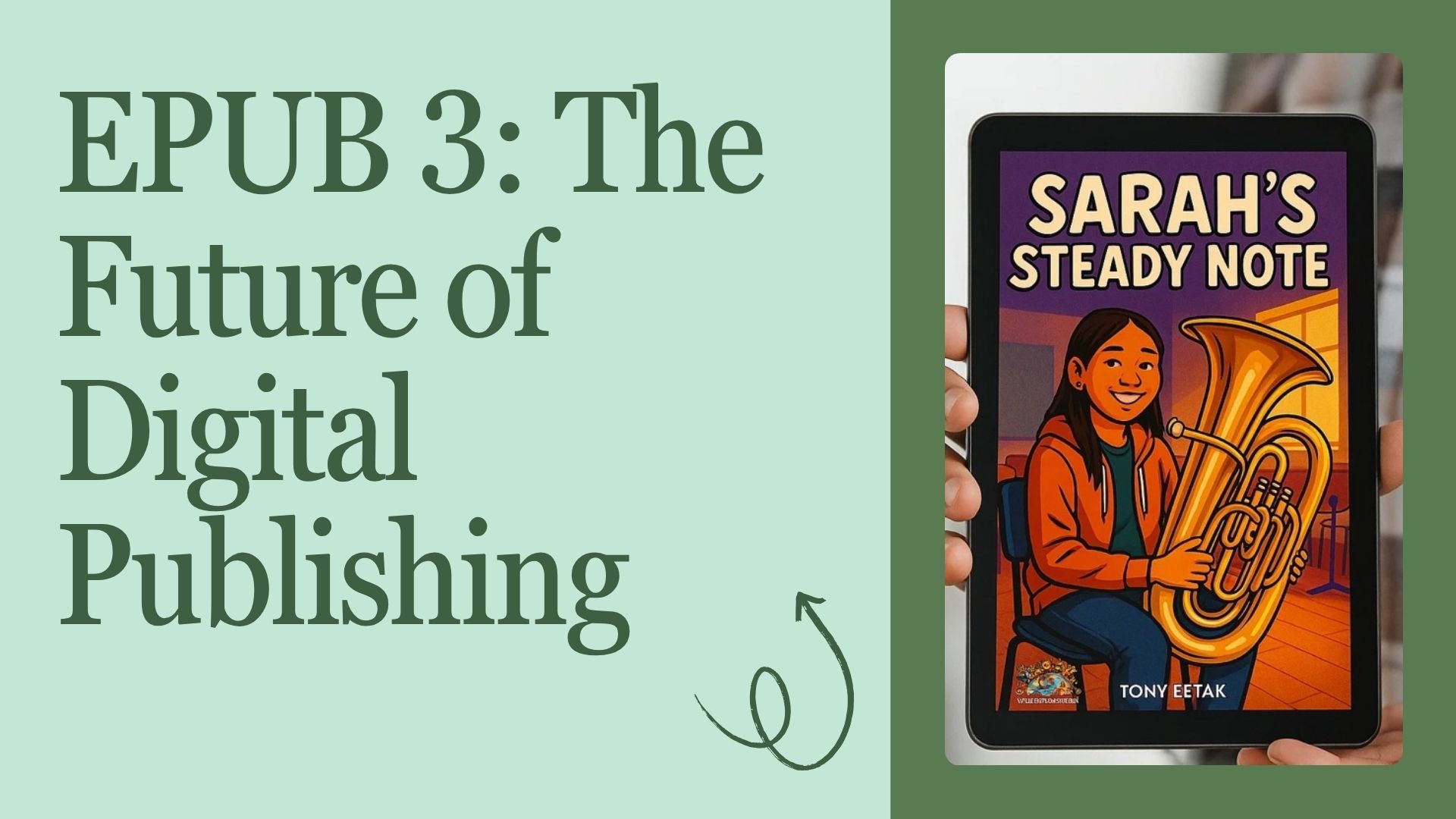
This week, we’re exploring EPUB 3, the open standard that defines how modern digital books are created, shared, and experienced. Whether you’re an independent author, arts organization, or educational publisher, understanding EPUB 3 opens up new ways to make stories and knowledge more accessible, interactive, and inclusive.
What Is EPUB 3?
EPUB 3 is the latest version of the EPUB (Electronic Publication) standard — the format used by most e-readers, digital libraries, and learning platforms around the world. It’s maintained by the W3C (World Wide Web Consortium), the same organization that develops the core standards of the web.
In simple terms, EPUB 3 turns a book into a web-based package: a set of HTML, CSS, images, and media files that can be opened on any device or screen size. This means it’s not just a “digital version” of a print book — it’s a flexible, living format that can adapt to how readers actually engage with content today.
Why EPUB 3 Matters
Earlier EPUB versions (like EPUB 2) worked well for simple, text-only novels or reports. EPUB 3 expands the possibilities dramatically, supporting rich media, interactivity, and accessibility. Some of its most powerful features include:
- Audio, Video, and Animation: Embed sound, video, and motion directly into pages — perfect for children’s books, arts publications, or interactive learning.
- Scripting and Interactivity: Add JavaScript-based features such as quizzes, timelines, or image galleries.
- Global Language Support: Full compatibility with right-to-left languages, vertical text, and multilingual works.
- Accessibility Compliance: Built-in support for screen readers, alternative text, and structured navigation ensures that books can meet modern accessibility standards.
- Responsive Design: Text and media adapt seamlessly to different devices, from phones to large displays.
EPUB 3 and the Arts
For artists, cultural organizations, and educators, EPUB 3 provides a bridge between storytelling and technology. Imagine publishing an exhibition catalogue that includes audio interviews with artists, embedded videos of performances, or interactive maps of installations — all in a single digital edition that readers can download or access online.
It’s also a sustainable and open alternative to proprietary formats like Kindle or Apple Books. EPUB 3 files can be hosted on your own website, distributed through public libraries, or integrated into learning platforms — keeping your work accessible and under your control.
Accessibility and Inclusion
One of the most important aspects of EPUB 3 is its commitment to accessibility. Because it’s built on web standards, it supports assistive technologies used by readers with disabilities. Organizations working toward digital equity can use EPUB 3 to make their materials readable by everyone — aligning with the principles of universal design and inclusive publishing.
Looking Ahead
As we explore EPUB 3 this week, we’re not just learning a file format — we’re exploring a model for open, accessible digital publishing. It represents the best of the web’s philosophy: flexible, inclusive, and built on shared standards rather than closed platforms.
For communities, artists, and nonprofits working to share stories and knowledge across distances and generations, EPUB 3 offers a practical and inspiring path forward.
Acknowledgements
This year’s interdisciplinary arts, story telling and capacity building activities were made possible with support from Art Borups Corners, the Ontario Arts Council Multi and Inter-Arts Projects program, the Labovitz School of Business and Economics, the Minneapolis College of Art and Design Creative Entrepreneurship Program and Global Dignity Canada. Thanks to Jamie Bell, Tony Eetak, Krish Agrawal, Eva Suluk, Terri Bell, Dr. Olaf Kuhlke, Kendall Suluk, Maurice Betournay for supporting this year’s programming.





